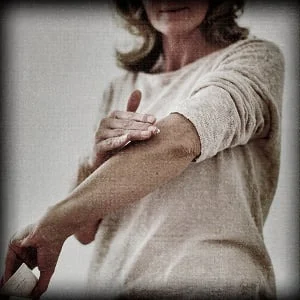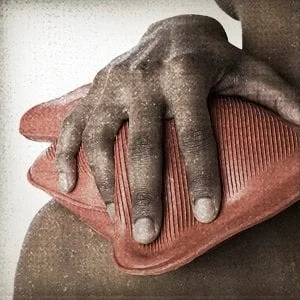Arthritis Pain: Management and Relief
Learn more about arthritis, the most common types and some tips to help manage and relieve your arthritis pain.
Everything You Need to Know About Arthritis
If you’ve been diagnosed with arthritis, you’re hardly alone: over 54 million Americans have been told by a doctor that they have some form of arthritis. That’s a full 23 percent of the U.S. population, and the number is expected to grow – by 2040, the CDC projects that 78 million (26 percent) American adults will have doctor-diagnosed arthritis1.
So, what is arthritis? It’s a catch-all term for the wide variety of conditions that affect or cause inflammation in the joints2. The most common symptoms are pain, swelling, stiffness in the joints and decreased range of motion3, and those symptoms may worsen with age4.
The two most common types of arthritis are osteoarthritis and rheumatoid arthritis:
Osteoarthritis: This is the most common form of arthritis, affecting more than 27 million Americans. Here’s what you should know about it:
Osteoarthritis (OA) is a degenerative disease in which the protective cartilage that covers the ends of bones where they form a joint breaks down, causing the bones to rub directly against one another, which causes pain, swelling and stiffness – not to mention bone spurs that can permanently reshape the joint.
According to the National Institutes of Health, OA is common among Americans aged 65 years and older; it is most often related to the “wear and tear” that occurs on your joints as you age.
Age-related, natural wear-and-tear is not the only factor that can increase the risk of OA. Injuries to joints, like those incurred while playing sports, can also increase the likelihood of developing this condition. Women are more predisposed to certain injuries, including ACL tears.
Being overweight also increases the chances of developing OA; at least one major study shows that people who are overweight and active have the same likelihood of developing OA as people who are overweight and sedentary.
Smoking can make your OA worse: Smokers with OA have been shown to experience more pain and greater cartilage loss than non-smokers.
One factor you have no control over? Genetics. Some people are predisposed more than others to developing OA.
Rheumatoid arthritis. Less common than OA, rheumatoid arthritis (RA) still affects about 1.3 million American adults. Here’s what you should know:
RA is an autoimmune disease in which the body’s immune system attacks the lining of the joint capsule, the membrane that surrounds the joint5.
RA often occurs in a symmetric pattern, meaning sufferers often have it in both knees, both hands, etc.
It most often affects people in middle and older age, but can also impact young adults and children.
Tips for Managing Your Arthritis Pain
Just because you may have arthritis doesn’t mean it needs to slow you down. Here are three key ways to manage arthritis pain so you can keep moving and do the things you need – and want – to do.
1. Exercise: Exercise can increase joint mobility, reduce joint pain and stiffness, and support weight loss – all of which are critical for arthritis sufferers. Exercising also provides benefits such as increasing flexibility and muscle strength, endurance and cardiac fitness. Focus on low-impact exercises like yoga, swimming, cycling or walking, but avoid high-impact and repetitive-motion activities like running and tennis.6
2. Manage Your Weight: Being overweight can put additional pressure on your joints and contribute to arthritis pain7. Maintain a healthy lifestyle with a balanced diet, regular physical activity and eliminating unhealthy activities like smoking.
3. Pain Management8: Over-the-counter pain relievers can help arthritis sufferers deal with periodic pain. Analgesics and nonsteroidal anti-inflamatory drugs (NSAIDS) can help reduce pain, while nonsteroidal anti-inflammatory drugs (NSAIDs) can reduce pain some topical analgesic ointments, patches, or creams such as Ultra Strength BENGAY® Cream, can also relieve minor arthritis and joint pain. Prescription medications are available as well to help manage pain. You should consult with your doctor about what type of pain management or exercise program is right for you.
Living with arthritis pain doesn’t have to keep you from doing the things you love. With the right balance of lifestyle modifications and an appropriate pain management program, you can keep going!




